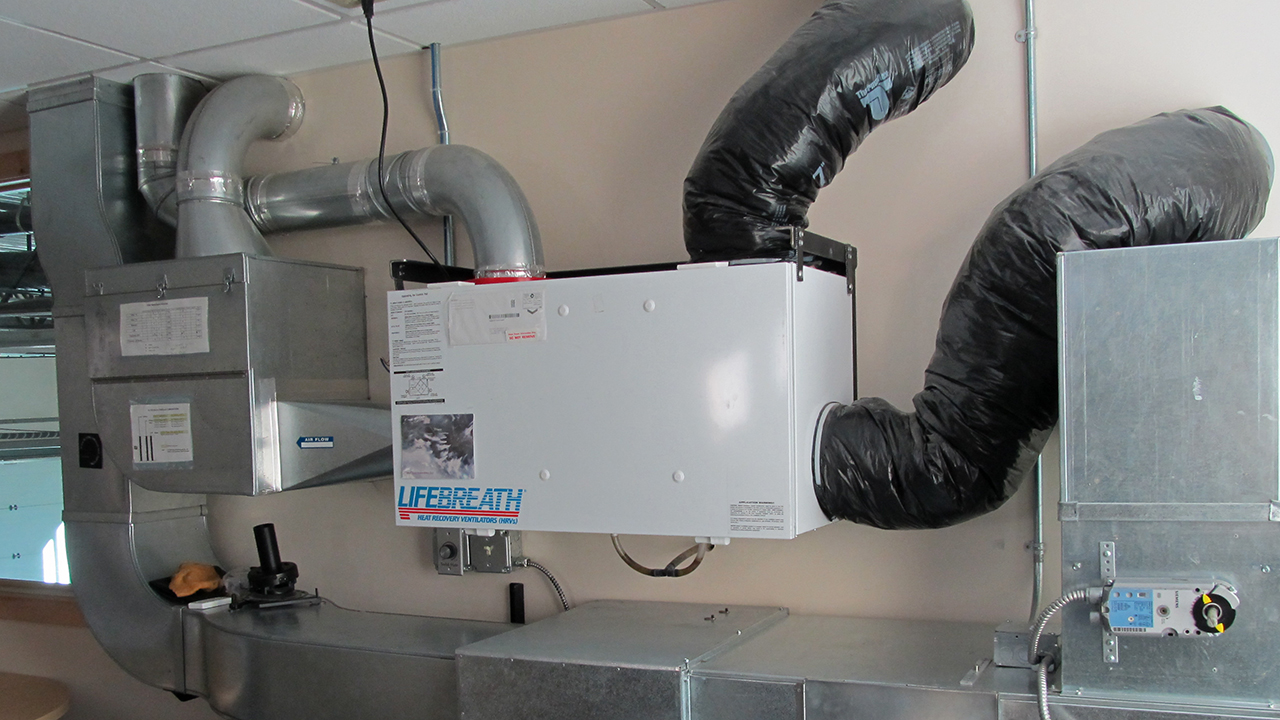Expert Tips to Maximize HRV Efficiency
Wiki Article
Discovering the Benefits of Heat Recovery Ventilation for Power Performance in Residences
Heat Recovery Ventilation (HRV) systems offer home owners a useful method to improving energy effectiveness. By redeeming warmth from outgoing air, these systems can substantially lower cooling and heating prices. Furthermore, they supply a stable supply of fresh air, boosting interior air high quality and comfort levels. As house owners think about sustainable alternatives, recognizing the nuances of HRV systems becomes increasingly important. What factors should one evaluate prior to making such a financial investment?Recognizing Heat Recovery Ventilation Equipments

Exactly How HRV Improves Indoor Air Top Quality

Power Savings: The Financial Benefits of HRV
Making best use of energy effectiveness, heat recovery ventilation (HRV) systems supply considerable economic advantages for home owners. By recovering and reusing warm from exhaust air, HRVs considerably decrease cooling and heating costs. This modern technology can lead to power savings of approximately 30%, depending upon environment and usage patterns. House owners commonly see reduced energy bills quickly after installment, making HRVs an economically wise financial investment gradually. In addition, numerous regions provide motivations or rebates for energy-efficient upgrades, better boosting the economic appeal. As energy rates remain to increase, the cost-effectiveness of HRVs ends up being significantly clear. Generally, the consolidation of HRV systems not only promotes energy efficiency however likewise adds to long-lasting economic cost savings for households.The Ecological Influence of Heat Recovery Ventilation
A significant environmental benefit of heat recovery ventilation (HRV) systems hinges on their capacity to reduce overall energy usage. By redeeming warmth from exhaust air and moving it to incoming fresh air, HRV systems lessen the need for energy-intensive heating and cooling methods. This reduction in energy demand contributes to reduce greenhouse gas discharges, as much less fossil gas is called for to maintain comfortable indoor temperature levels. Additionally, HRV systems improve interior air top quality by successfully exchanging stale air with fresh outdoor air, reducing reliance on mechanical cooling systems that can hurt the environment. On the whole, the application of HRV systems supports sustainable living methods and lines up with global efforts to battle environment change by promoting energy efficiency in household settings.
Selecting the Right HRV System for Your Home
How can property owners ensure they select the appropriate heat recovery ventilation (HRV) system for their needs? They need to examine their home's dimension and design, as these variables affect air movement needs. Next off, reviewing the system's effectiveness rankings is crucial, as higher scores indicate far better performance and energy financial savings. House owners must additionally think about setup and upkeep costs, comparing different brands and versions for value. In addition, it is necessary to assess sound levels, as some systems operate more quietly than others. Consulting with HVAC specialists can supply tailored referrals based on certain home problems. Taking a look at user evaluations and guarantees can assist in making an informed choice, guaranteeing that the chosen HRV system effectively enhances indoor air high quality and power performance.Frequently Asked Questions

Exactly how Often Should I Tidy or Preserve My HRV System?
The frequency of cleaning or keeping a warm recuperation ventilation (HRV) system normally depends on usage and environmental factors. Usually, it is recommended to do upkeep every 6 months to assure peak efficiency and air quality.
Can HRV Systems Assist Lower Humidity Levels Indoors?
HRV systems can successfully reduce indoor humidity degrees by exchanging stagnant, moist air with fresh, drier air from outside. HRV Heat Recovery Ventilation. This process helps keep a balanced indoor atmosphere, enhancing comfort and preventing moisture-related problems
What Is the Life-span of a Regular HRV System?
The lifespan of a common heat recovery ventilation (HRV) system differs, usually lasting between 10 to 15 years. Routine upkeep can expand its efficiency and operational life, making sure peak efficiency throughout its use duration.Exist Any Kind Of Sound Worry About HRV Systems?
Sound worry about HRV systems can arise, particularly from follower procedure. Nonetheless, several contemporary systems are made to decrease audio levels, ensuring they operate silently while keeping performance, which resolves potential disruptions in living environments.HRV Heat Recovery Ventilation
Can I Set Up an HRV System Myself, or Do I Required a Professional?
The private contemplated whether to install the heat recovery ventilation (HRV) system personally or work with a professional. Normally, while do it yourself installation is feasible, experience guarantees appropriate capability and conformity with local building codes, improving system performance.Report this wiki page